For the first time in more than a year our monthly Pen Night met face to face. To allow us to socially distance, and to try out a hybrid format with far-aways coming in on Zoom, we gathered in the carriage house at Beaconsfield.
The hybrid experiment failed: the latency introduced by the wireless connection to the projector meant Zoom’s echo cancellation broke down completely. We’ll try again next time with a hard-wired connection to see if that improves things.
But the face to face was a rousing success, with a dozen of us gathering to immerse ourselves in fountain pen nerdiness.
Highlights included special guest star Art, a summer resident, who brought some lovely heavy pens with intriguing nibs, an Aurora 88 passed around by Stephen, a bookbinding gift from Chantal, and a good assortment of notebooks and letters circulated for inspection. There were also some very good refreshments: Tolkien-inspired cookies and rhubarb-strawberry crumble squares.
Being back in the room with my pen friends reminded me how important the monthly pen respite was during the summer of 2019 while Catherine was sick: just being able to get away for a few hours and not think about matters of life, cancer, and death was enormously helpful for my mental health.
We’ll meet again in August.
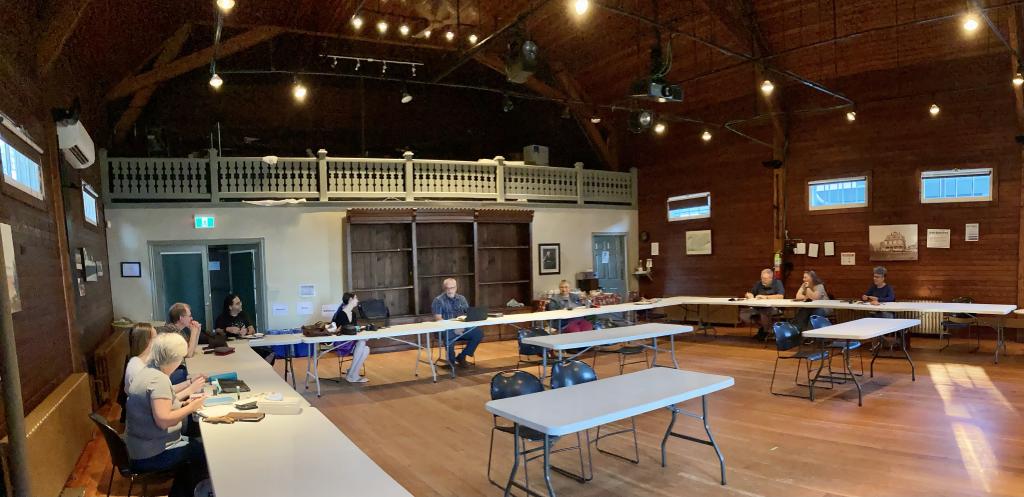
I love this interview of Alicia Kennedy by Sarah Miller, which starts as a discussion about a pair of silver platform clogs, and migrates into an exploration of hyper-performant femininity and how “an interesting pair of shoes can throw the straight male mind into helpless orbit.”
From the introduction to Finn V. Gratton’s Supporting Transgender Autistic Youth and Adults:
Finally, language related to “functioning levels” (e.g., “high-functioning” and “low-functioning”) will not be used, unless it is part of a quote or a study. The term “autism spectrum” will not be used because it generally refers to a one-dimensional line that extends from point A (those people perceived as furthest from allistic functioning) to point B (those perceived as most like allistic people). This verbal and mental construction posits a one-dimensional view of human experience and expression that places allistic experience and behavior as superior to autistic experience and behavior. Where differences in functioning matter, for example in the case of autistic individuals with low speech abilities trying to access services, I will note the distinguishing characteristics that affect the autistic person’s life.
I hitched up my canoe to my bicycle using the Wicycle Trailer this afternoon to see how it handled on the road.
The canoe-bicycle connection is via a device Wicycle calls the “smart stick” and it turns out to be pretty smart: it mounts to the seat post of the bike and then ties up to the bow line of the canoe in a way that both keeps the canoe from flopping around and allows it to turn freely.
Out on the road, the weight of the canoe felt about the same as pulling a fully loaded trailer of groceries, albeit with more horizontal sway. It seems like a reasonable thing to expect to be able to cycle out to Andrews Pond for a first paddle. And home again.
I already have visions of getting a Brompton folding bicycle that I could carry in the canoe itself, allowing me full intermodality.
 ,
, 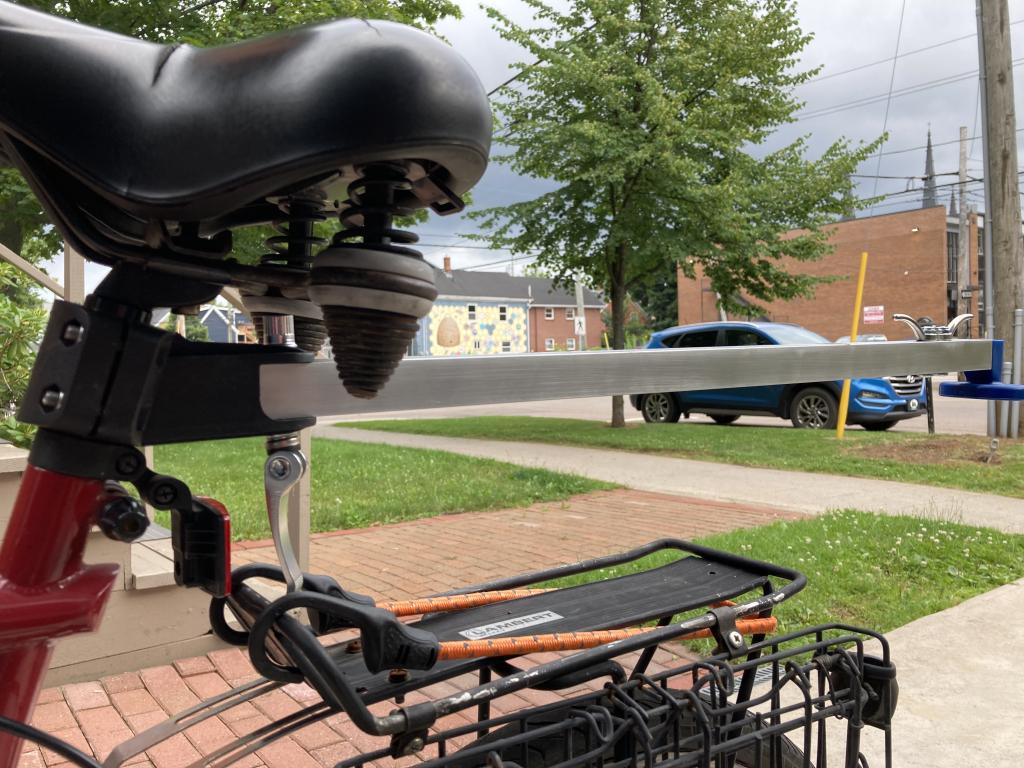 ,
, 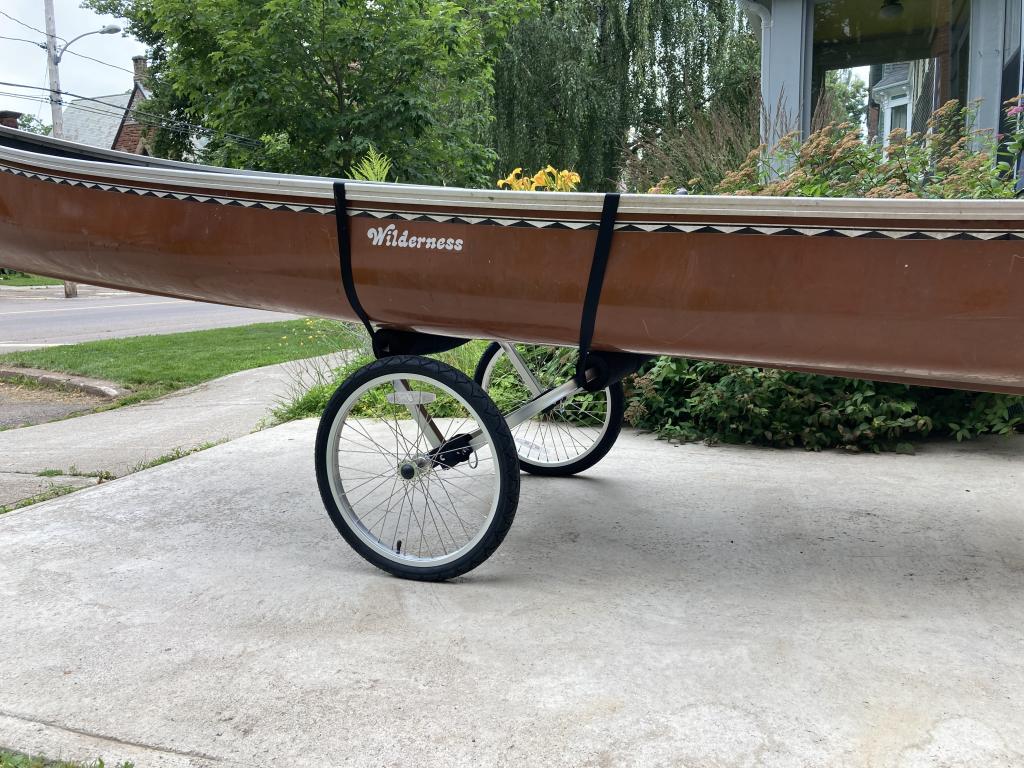 ,
, 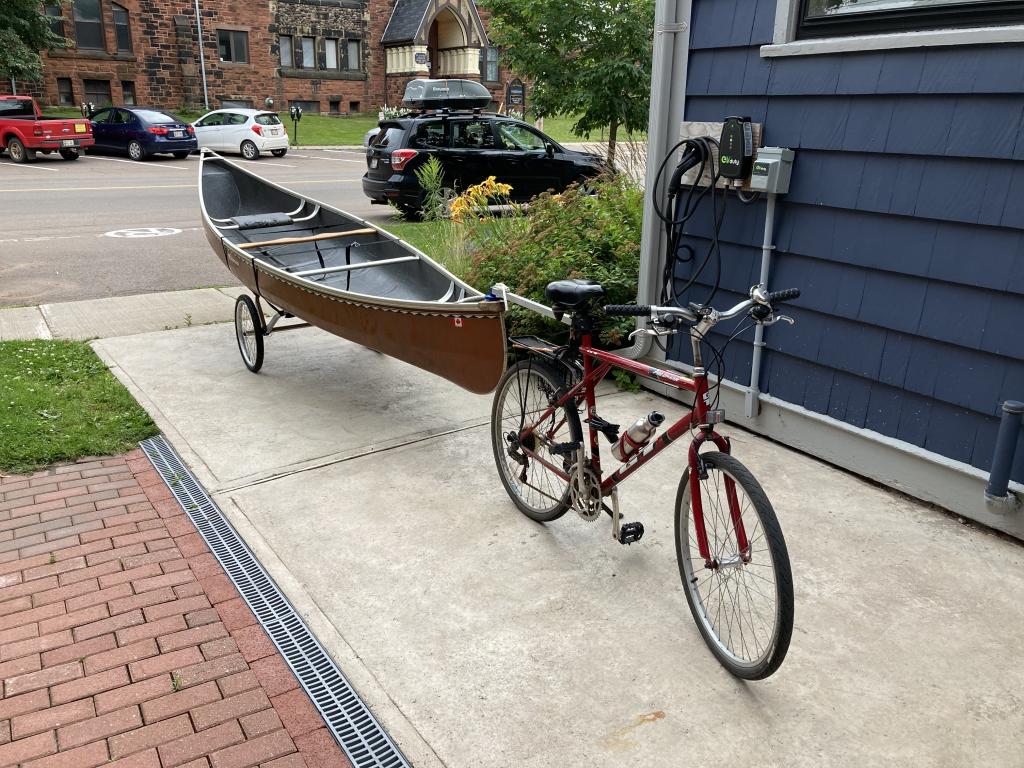 ,
, 
My Essex Country friends Laurie Brett and Art Rhyno came for a visit today, the first outlanders I’d laid eyes on months: they were en route from Ontario to Nova Scotia to see family, and, being lovers of Prince Edward Island, arranged their route to take them over here for a night.
As longtime readers will know, I’ve known Art since forever: we met in 1994 in St. John’s at the Access conference, and our paths have overlapped many times since.
Laurie is a former newspaper publisher, having run her family’s Essex Free Press for many years. And it was bearing a galley of type from the Free Press that Laurie arrived in Charlottetown, on a mission to see it given life in print via my Golding Jobber № 8.
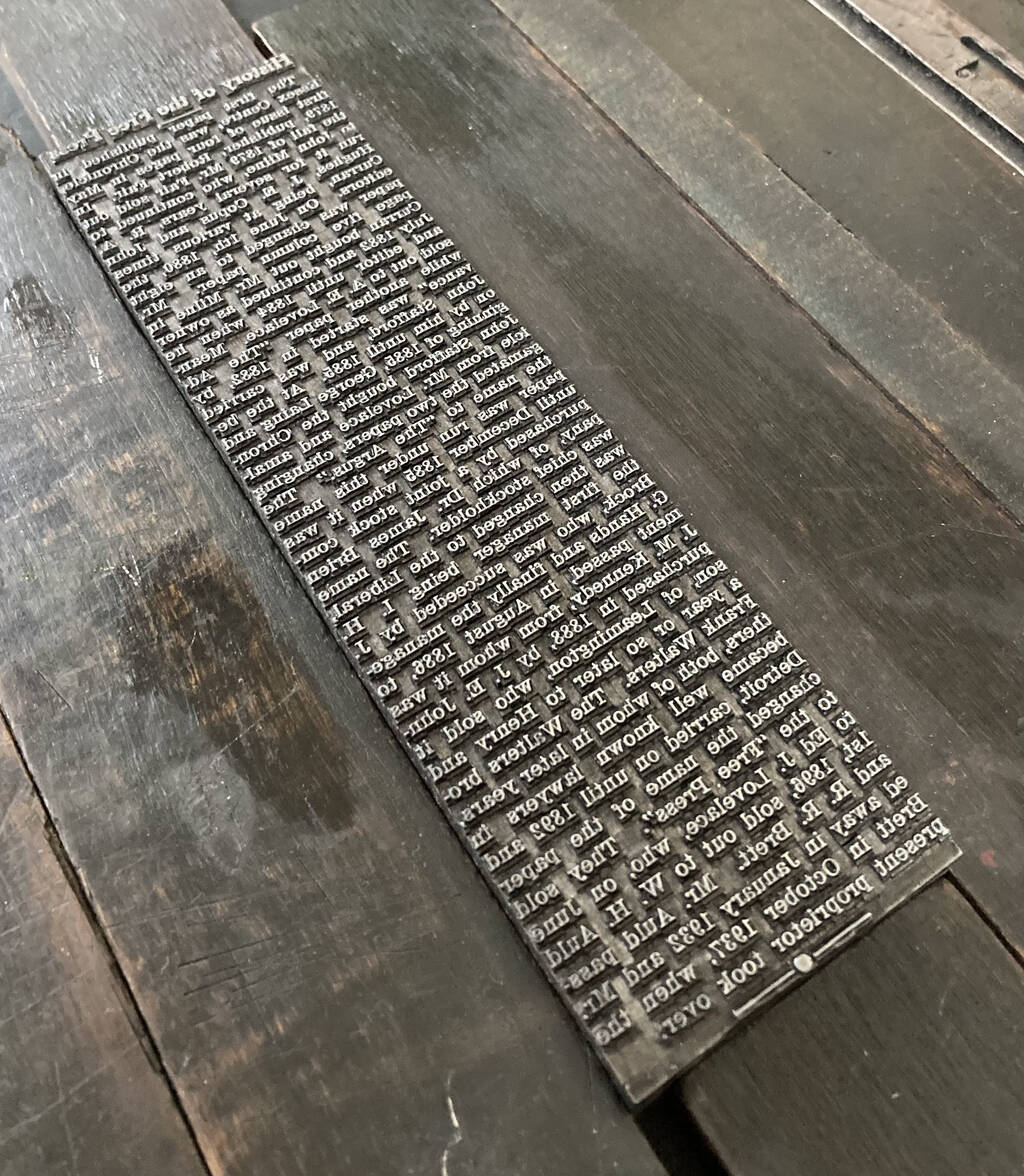
The galley had been passed down through the family publishers of the paper, and was originally set on a Linotype machine; despite having seen such machines in operation many times, this was my first time getting to handle their real work product: so much less fiddling than dealing with hand-set type!
Here’s the result:
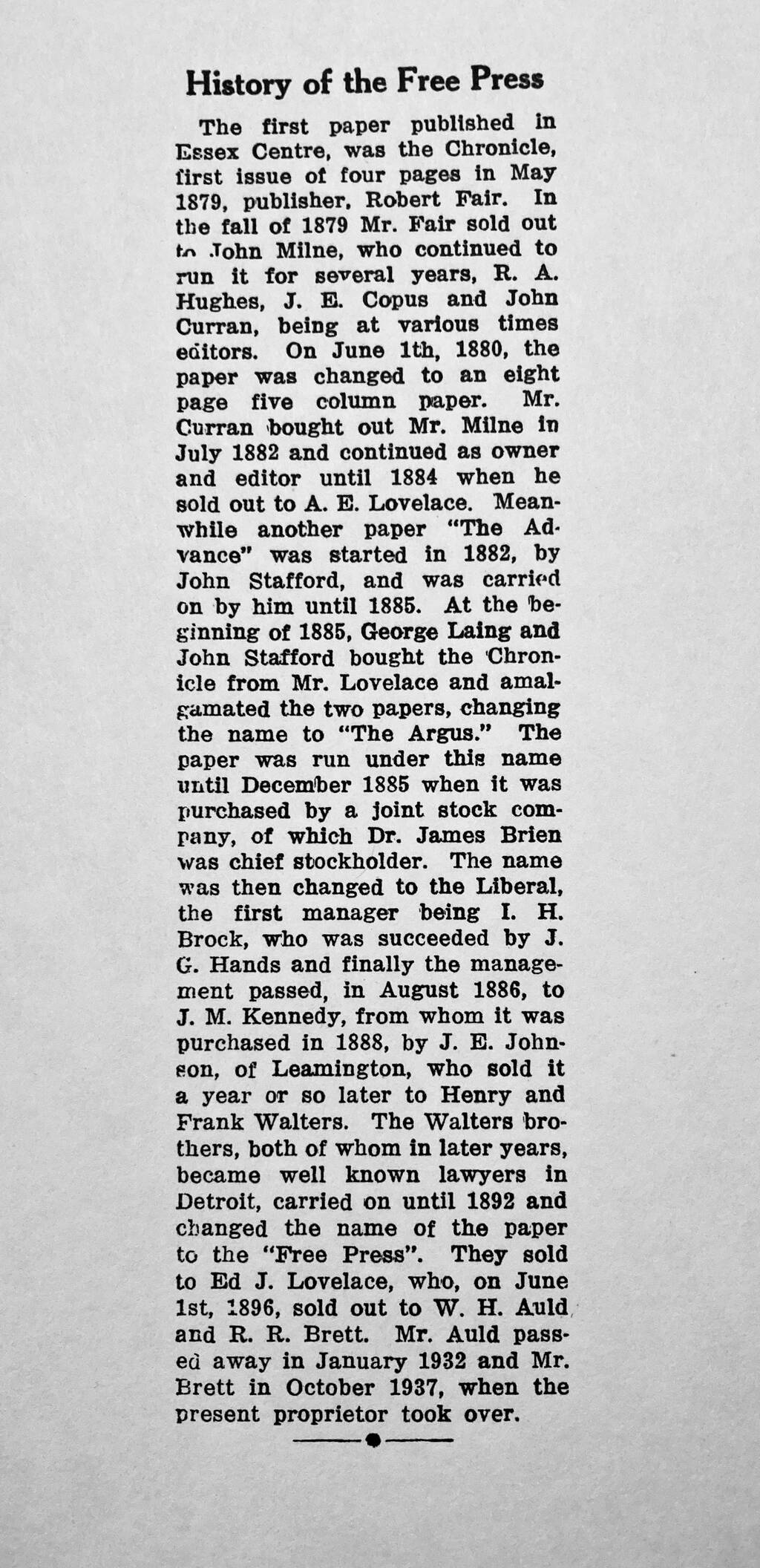
One of the fringe benefits of reanimating the story on paper is that it can now be OCRed, thus:
History of the Free Press
The first paper published in Essex Centre, was the Chronicle, first issue of four pages in May 1879, publisher, Robert Fair. In the fall of 1879 Mr. Fair sold out to John Milne, who continued to run it for several years, R. A. Hughes, S. E. Copus and John Curran, being at various times editors. On June 1th, 1880, the paper was changed to an eight page five column paper. Mr. Curran bought out Mr. Milne in July 1882 and continued as owner and editor until 1884 when he sold out to A. E. Lovelace. Meanwhile another paper “The Advance” was started in 1882, by John Stafford, and was carried on by him until 1885. At the beginning of 1885, George Laing and John Stafford bought the Chronicle from Mr. Lovelace and amalgamated the two papers, changing the name to “The Argus.” The paper was run under this name until December 1885 when it was purchased by a joint stock company, of which Dr. James Brien was chief stockholder. The name was then changed to the Liberal, the first manager being I. H. Brock, who was succeeded by J. G. Hands and finally the management passed, in August 1886, to J. M. Kennedy, from whom it was purchased in 1888, by J. E. Johnson, of Leamington, who sold it a year or so later to Henry and Frank Walters. The Walters ‘brothers, both of whom in later years, became well known lawyers in Detroit, carried on until 1892 and changed the name of the paper to the “Free Press”. They sold to Ed J. Lovelace, who, on June 1st, 1896, sold out to W. H. Auld and R. R. Brett. Mr. Auld passed away in January 1932 and Mr. Brett in October 1937, when the present proprietor took over.
I’m so happy to have been able to do this.
From Lisa M. Shulman’s Before and After Loss:
The process of emotional healing and brain healing is enhanced by a balance of activities and experiences, some distracting and some challenging, some physical and some emotional, some social and some private.
Maybe this explains my move into sportiness.
As I was leaving Sporting Intentions after purchasing a new lifejacket in preparation for some cycle-canoeing, and heading toward Freetown for my horseback riding lesson, I was hit with a sudden realization: I’ve become sporty.
Not sporty in the “think the Jays will win the pennant?” way, and not sporty in the Pat Martel recreational soccer league way. But sporty nonetheless.
How did this happen?
When I switched to a Mac decades ago, BBEdit was my OG text editor.
In the years since I’ve been lured away by the siren call of TextMate and then of Sublime Text.
But now BBEdit 14 is out and its release notes start:
We encourage you to read the complete change notes for BBEdit 14.0. (We spent a lot of time writing those notes, so it would be great for someone to read them. Be that someone.)
I was that someone. And I walk away impressed enough to give BBEdit another look.
BBEdit’s maker, Barebones Software, is, by the way, just off Route 3 in North Chelsmford, MA. I drive right by every time I fly into Boston and drive up to [Yankee]. Someday maybe I’ll drop in.
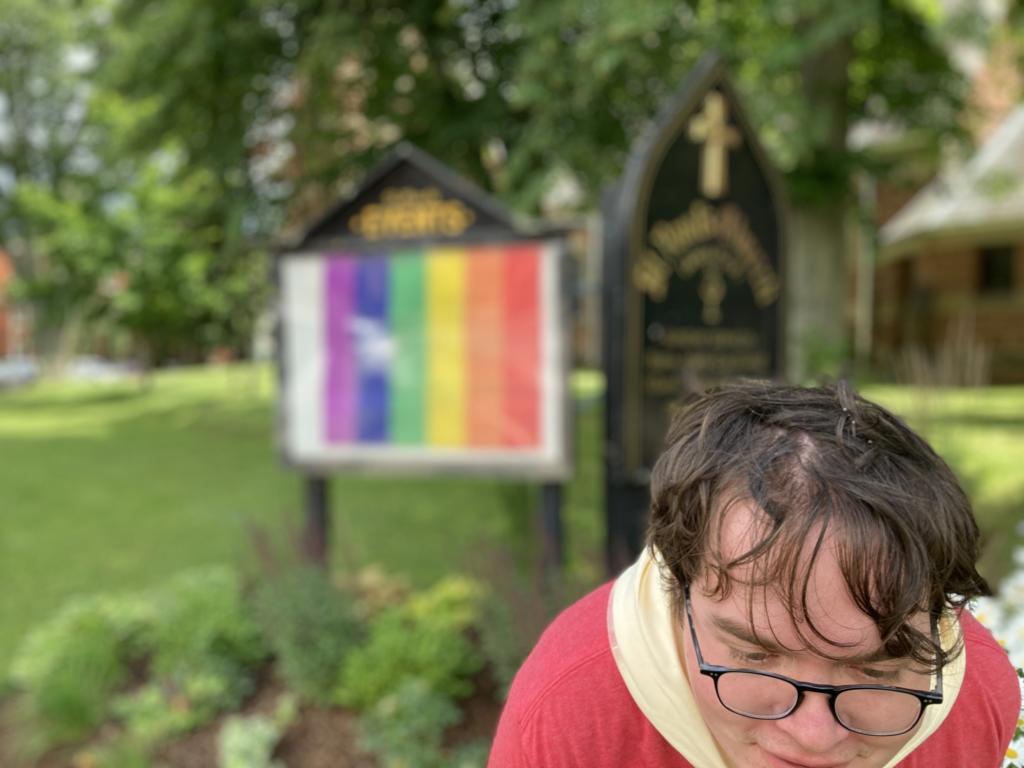
 I am
I am